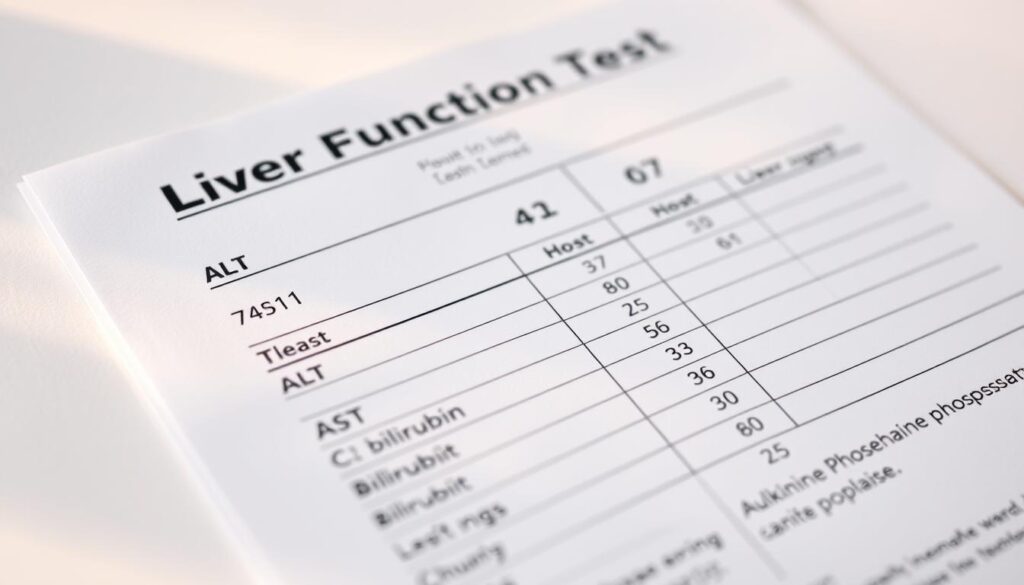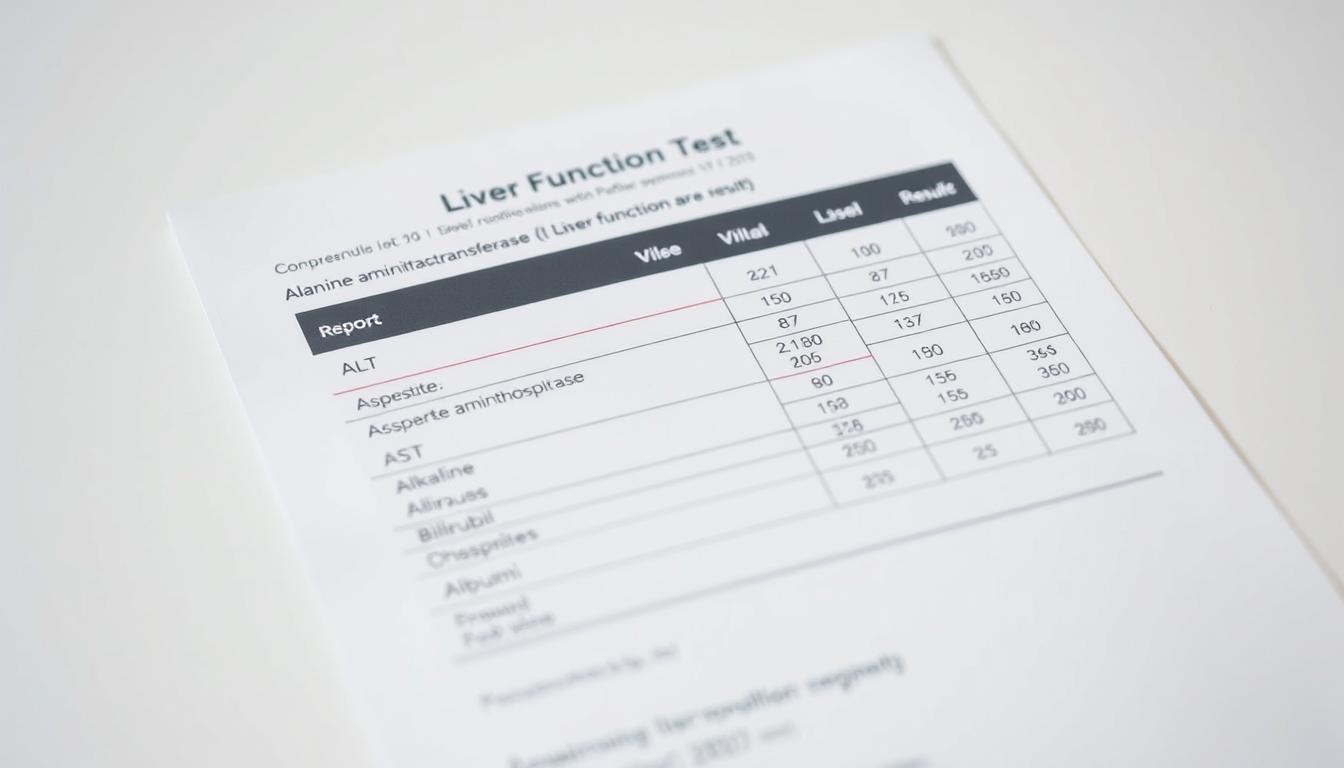Liver disease affects millions of people worldwide, often silently progressing until severe damage is done. Understanding your liver health is crucial, and interpreting liver function test results is a key part of this process.
Interpreting these results can seem daunting, but it’s easier than you think. By breaking down the components of a liver function test, you can gain valuable insights into your liver’s health. This guide will walk you through the process, empowering you to take control of your well-being.
Key Takeaways
- Understand the components of a liver function test
- Learn to interpret your test results accurately
- Discover the significance of liver health
- Identify potential liver issues early
- Take proactive steps towards maintaining liver health
What Are Liver Function Tests and Why They Matter
Liver function tests are a crucial diagnostic tool used to assess the health of your liver. These tests measure various enzymes and proteins in your blood to provide insights into your liver’s condition.
The liver plays a vital role in overall health by performing several critical functions, including detoxification, protein synthesis, and production of biochemicals necessary for digestion. A healthy liver is essential for maintaining overall well-being.
The Role of Your Liver in Overall Health
Your liver is responsible for filtering toxins from your blood, producing vital proteins, and aiding in digestion. It also stores glycogen, a complex carbohydrate that is converted into glucose and released into the bloodstream when needed. A healthy liver is crucial for maintaining energy levels and overall health.
“The liver is the only organ in the human body that can regenerate itself. However, chronic damage can lead to scarring and cirrhosis, emphasizing the importance of monitoring liver health.”
Common Reasons for Liver Function Testing
Liver function tests are commonly ordered for individuals with risk factors for liver disease, such as alcohol abuse, obesity, or a family history of liver conditions. They are also used to monitor patients with known liver disease and to assess the effectiveness of treatments.

Components of a Standard Liver Panel
A standard liver panel typically includes tests for liver enzymes such as alanine transaminase (ALT) and aspartate transaminase (AST), as well as tests for alkaline phosphatase (ALP) and gamma-glutamyl transferase (GGT). It also measures bilirubin levels and assesses the liver’s synthetic function through albumin and total protein tests.
| Test | Normal Range | Significance |
|---|---|---|
| ALT | 0-40 U/L | Elevated levels indicate liver cell damage |
| AST | 0-40 U/L | High levels can indicate liver damage or other conditions |
| ALP | 30-120 U/L | Elevated levels may indicate bone or liver disorders |
Understanding these components is crucial for analyzing liver function test reports and making informed decisions about your health.
How to Read Liver Function Test Results at Home
Empowering yourself with knowledge about your liver function test results can be a significant step towards better health. Liver function tests (LFTs) are a group of tests used to assess liver damage or disease. Understanding these test results can help you take proactive steps in managing your liver health.
Understanding Your Lab Report Format
Your lab report will typically include several tests, each measuring different aspects of your liver function. The report format may vary slightly depending on the laboratory, but it generally includes the test name, your result, the normal range, and sometimes flags for abnormal results. Pay close attention to the normal range values, as they are crucial for interpreting your results.
Normal Range Values and What They Mean
Normal range values are the cornerstone of interpreting your LFT results. These ranges are established by testing a large population of healthy individuals. Your results are considered normal if they fall within this range. Here’s a breakdown of common LFT components and their typical normal ranges:
| Test | Normal Range | What it Measures |
|---|---|---|
| ALT (Alanine Transaminase) | 0-40 U/L | Liver cell damage |
| AST (Aspartate Transaminase) | 0-40 U/L | Liver cell damage, also found in other tissues |
| ALP (Alkaline Phosphatase) | 30-120 U/L | Cholestasis, bone disorders |
Tools and Apps for Self-Interpretation
Several tools and apps are available to help you interpret your LFT results. These range from simple online calculators to sophisticated mobile apps that can track your results over time. When choosing a tool or app, look for ones that are clinically validated and have good user reviews.
By understanding your lab report format, interpreting normal range values, and utilizing the right tools and apps, you can take a proactive approach to managing your liver health at home.
Interpreting Key Liver Enzymes and Proteins
Decoding liver function test results is crucial for understanding your liver’s health. The complexities of these tests can be unraveled by examining the key enzymes and proteins that indicate liver health.
ALT and AST: The Transaminases
Alanine transaminase (ALT) and aspartate transaminase (AST) are enzymes found primarily in liver cells. Elevated levels of these enzymes in the blood can indicate liver damage. ALT is more specific to the liver, while AST is found in various tissues, including the liver, heart, and muscles. Understanding the ratio of AST to ALT can also provide insights into the cause of liver injury.
ALP and GGT: Cholestatic Markers
Alkaline phosphatase (ALP) and gamma-glutamyl transferase (GGT) are enzymes that can indicate cholestasis, a condition where bile flow is reduced or blocked. ALP is found in the liver, bones, and other tissues, while GGT is more specific to the liver. Elevated levels of these enzymes can suggest liver or bone disorders.
Bilirubin: Direct vs. Indirect
Bilirubin is a pigment produced during the breakdown of hemoglobin. It exists in two forms: direct (conjugated) and indirect (unconjugated). Direct bilirubin is processed by the liver, while indirect bilirubin is not. Elevated levels of direct bilirubin can indicate liver dysfunction or bile duct obstruction.
| Liver Enzyme/Protein | Normal Range | Significance of Elevated Levels |
|---|---|---|
| ALT | 0-40 U/L | Liver cell damage |
| AST | 0-40 U/L | Liver or muscle damage |
| ALP | 30-120 U/L | Cholestasis or bone disorders |
| GGT | 0-50 U/L | Liver or bile duct disease |
Albumin and Total Protein
Albumin and total protein levels are indicators of the liver’s synthetic function. Low albumin levels can suggest chronic liver disease or cirrhosis. Total protein includes albumin and globulins, and abnormalities can indicate various health issues.
PT/INR: Clotting Function
Prothrombin time (PT) and international normalized ratio (INR) assess the liver’s ability to produce clotting factors. Prolonged PT or elevated INR can indicate liver dysfunction or vitamin K deficiency.
By understanding these key liver enzymes and proteins, you can gain valuable insights into your liver health and make informed decisions about your care.
Monitoring Your Liver Health at Home
To keep your liver healthy, it’s essential to not only understand your liver function test results but also to track changes over time and adjust your lifestyle accordingly. Monitoring your liver health at home empowers you to take proactive steps towards maintaining optimal liver function.
Tracking Test Results Over Time
Keeping a record of your liver function test results over time allows you to identify any trends or significant changes. This can be done using a simple log or through mobile apps designed for health tracking. Consistency is key when monitoring your liver health.
By tracking your results, you can:
- Notice improvements or declines in your liver health
- Adjust your lifestyle or treatment plan as needed
- Have more informed discussions with your healthcare provider
Lifestyle Factors That Affect Liver Function
Several lifestyle factors can significantly impact your liver health, including diet, alcohol consumption, and physical activity. A balanced diet rich in fruits, vegetables, and whole grains can support liver health, while excessive alcohol consumption can be detrimental.
| Lifestyle Factor | Positive Impact | Negative Impact |
|---|---|---|
| Diet | Balanced diet with fruits and vegetables | High intake of processed foods and sugars |
| Alcohol Consumption | Moderate or no alcohol consumption | Excessive alcohol consumption |
| Physical Activity | Regular exercise | Sedentary lifestyle |
Warning Signs That Require Medical Attention
While monitoring your liver health at home, it’s crucial to be aware of warning signs that necessitate medical attention. These can include jaundice, severe abdominal pain, or significant changes in your test results.
If you experience any of the following, seek medical help:
- Yellowing of the skin or eyes (jaundice)
- Severe abdominal pain or swelling
- Dark urine or pale stools
Questions to Ask Your Doctor About Your Results
Being prepared with questions for your healthcare provider can help you better understand your liver health and any necessary next steps. Consider asking about the implications of your test results, recommended lifestyle changes, or the need for further testing.
Some questions to consider:
- What do my test results indicate about my liver health?
- Are there any lifestyle changes I can make to improve my liver health?
- Do I need any additional testing or follow-up appointments?
Conclusion
Understanding your liver function test results is a crucial step in maintaining overall health. By learning how to read liver function test results at home, you can take a proactive approach to monitoring your liver health and identifying potential issues early on.
With the knowledge gained from this guide, you can confidently track your test results over time, make informed lifestyle choices, and seek medical attention when necessary. Regular monitoring and a healthy lifestyle can significantly contribute to maintaining optimal liver function.
By being informed and proactive, you can empower yourself to take control of your liver health and overall well-being. Stay vigilant, and don’t hesitate to consult with your healthcare provider if you have any concerns about your liver function test results.
